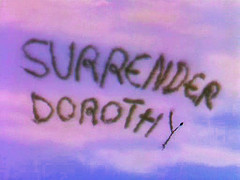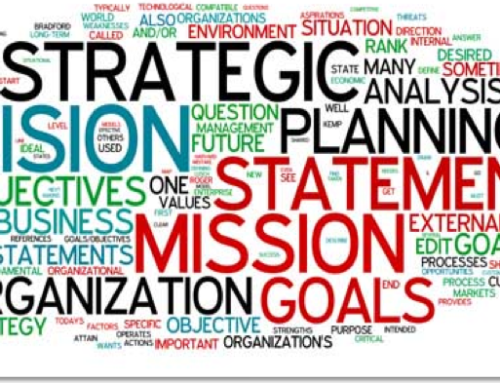In the genes?
I don’t know if we PR pros have a faulty gene or what, but we make it so easy for other professionals to beat up on us.
Image: JKönig via Flickr, CC 2.0
Last week I posted 6 ways to ruin your chances of getting free publicity over at BNET.
If you haven’t read it yet, the background is that I used HARO to source a query for BNET.
And O.M.G.
In my wildest dreams, I couldn’t have imagined the kinds of responses I’d get.
Which is why some of the “ways to ruin your chances” include things like:
1. Be blatantly self-promotional.
I can’t tell you how many pitches I received that were so bloviated, they would have made Alec Baldwin jealous. “I’m a social media expert as seen on <CABLE TV STATION>.”
And that was it. That was supposed to be the story.
By now, everyone is some kind of social media “expert.” So what’s new about you?
and
3. Be more vague than the Twilight Zone.
My query made it clear that I wanted examples of success, and how it was being measured. But many of the pitches I received included words to the effect, “so and so can discuss ______, let me know if you want to interview them.”
If you want more than a hope in hell of being a possible source for an article, you have to reel the reporter in. This means actually giving them what they’ll use in the article before it ever gets to the interview stage.
If you’re too lazy ”” or uninformed ”” to give them the basis of what they need to determine whether or not to include you in the story… well, all I can say is, good luck.
I guess Lady Luck is smiling on me, because the bad pitches continue.
So I decided to continue the list.
Since nos. 1 – 6 are in the BNET post, we’re starting with #7 here.
7. Sprinkle your pitch liberally with strikethroughs and other edits.
There’s nothing as appealing – not! – as getting an email pitch that is clearly copied and pasted from MS Word… in which your supervisor has used “track changes” to give you edits.
Do you really think I – or anyone you’re pitching – is going to take you seriously if “XX” has been crossed out and your name placed beside it?
Not to mention reading the body of your pitch after this gem: “Lead with the meat.”
Yes. Lead with the meat, for sure. But I shouldn’t know that that’s what you’re trying to do.
8. Make it blatantly obvious that I’m just a name in a database.
 Lemme tell ya. Constant Contact and other programs to send newsletters are great… if you’re sending newsletters.
Lemme tell ya. Constant Contact and other programs to send newsletters are great… if you’re sending newsletters.
But when you start to use them to send pitches… that sucks.
Especially if they begin with, “Hey There.”
And if they offer you a way to unsubscribe.
Unsubscribe? This is a mailing list I’ve been put on now?!
Image: Andy Field (Hubmedia) via Flickr, CC 2.0
(Side note: this has happened not just to me, but to other people I know.
And it’s not just “bad” PR people doing this; it’s business owners as well.)
9. Give with one hand and take with the other.
So you offer me an interview with So-And-So.
I write back, saying yes, I would like to do an interview with So-And-So.
But all of a sudden, S0-And-So is no longer available… but you still want me to do a book review/product giveaway that So-And-So is promoting.
Thanks, but no thanks.
10. Churn out so many pitches, you’d make a sweatshop envious.
 When I spoke at What’s Next DC the other day, I sat in on an “expert Q&A,” and had to reinforce the fact that if you’re going to pitch diligently and well, it takes time.
When I spoke at What’s Next DC the other day, I sat in on an “expert Q&A,” and had to reinforce the fact that if you’re going to pitch diligently and well, it takes time.
Let me be blunt: I don’t believe you can send out 50 pitches a day if you’re going to do your research and personalize them.
Because that takes time.
But heck. What does it matter?
After all, there’s sure to be a sweatshop somewhere that could hire you, right?
Image: marissaorton via Flickr, CC 2.0
11. Clog my email with attachments.
Pretty much every PR/journo panel I’ve ever sat in on/listened to say one thing, if they say anything at all: Do not send attachments if they’re not asked for.
This is because the attachments get caught up in spam filters, clog their email, etc.
So why, oh why do folks keep doing this?!
If I want more information, I’ll ask you for it. And no, please don’t send a PDF file either… unless it’s asked for.
If I don’t, I will take great pleasure in trashing your email. Consider yourself warned.
12. Assume your press release is as fascinating as the State of the Union speech.
 OK, maybe that’s not the best comparison, but at least the president’s State of the Union speech is. An. Event.
OK, maybe that’s not the best comparison, but at least the president’s State of the Union speech is. An. Event.
I hate to break it to you, but your press release is not.
Image: Leo Reynolds via Flickr, CC 2.0
So when you send an email to a journalist, with a terse introductory note telling them to “please read the press release below,” do you really think they will be enchanted?
Er, no. NO.
13. Be more vague than the plot of “Lost.”
Here’s the thing. You can send pitches that have an emotional appeal inherent in the story.
E.g.: “So-And-So did EVERYTHING she could to save Such-And-Such Theater.
“From One Mom’s Mouth to the City Council’s Ears.
“And she SAVED IT!”
OK. So whaddya want me to do about it?
Ya want me to interview her? Run a profile piece? What exactly are you asking for?
If you don’t have a specific call-to-action in your pitch, you’re pretty much doomed from the get-go.
14. Pay no attention to the (wo)man behind the curtain.
It may have escaped your notice, but more and more media (and bloggers) are working for multiple outlets these days.
 Sometimes it’s a factor of their personal economics, sometimes it’s because their employers acquire other properties and spread the wealth around.
Sometimes it’s a factor of their personal economics, sometimes it’s because their employers acquire other properties and spread the wealth around.
And you know what? Sometimes, they could be writing/managing completely different properties.
There is nothing – nothing more irritating that being pitched a story… without the “pitchee” being very clear about which media property it is being pitched for.
If the person writes for multiple, similar properties – that’s fine, mention them.
But don’t send a blanket “your readers will enjoy this” if you haven’t even specified which readers you’re trying to reach.
Image: Tyler Durdan via Flickr, CC 2.0
15. Make sure your client/talking head is completely clueless.
This actually happened to me during the BNET/HARO experience.
The pitch made it through, the story looked interesting, an interview was set up.
And when it came time to talk to them, the people I was “interviewing” had absolutely no clue why I was talking to them.
So then I had to explain why I was on the phone with them, etc. etc.
Can you say “wet blanket,” anyone?
The truth is
that we’ve all made our mistakes. But it worries me that some of these things – which include basic commonsense – are still happening to the degree they do.
It’s one of the problems with PR.
It means we are not educating the entrants to our industry well. And for that, shame on us all.
We need to do a better job of that.
What are your pitching nightmare stories? Anything you’d care to share? I’d love to know.

![[EVENT]: PR Hacks for Small Biz (online)](https://shonaliburke.com/wp-content/uploads/2021/06/FB-Ad-1200x800-01-01-01-Copy-500x383.jpeg)








[…] still have to engage in smart media relations; in fact, you have to engage in even better media relations today, I think, precisely because technology has made it possible for any Tom, Dick and […]
To expand on #13, I read the publication and then name the specific section, column or reoccurring feature in the subject line. For example: “For Monday New Hire Column: Mike Smith Joins XXX Company as VP of Sales.”
That is a GREAT tip, Elaine! Happy New Year!
[…] you have the resource to blast-pitch people, you can try that (though it’s not an approach I advise at the best of times). Rather, I suggest you focus on reaching out to the people you’re connected to fairly […]
[…] Which are the ones you read? Assuming, of course, they’re not one of the 15 reasons your PR pitches suck? […]
[…] received this email about a month ago. Now, I’m used to getting bad pitches on a regular basis (which is an extremely sad thing to admit as a state of regularity for the public relations […]
[…] It’s the kind of “post” or “release” which, if they were on the receiving end, said correspondents would probably be screaming about from the rooftops as to why your PR pitches suck. […]
[…] 15 Reasons Your PR Pitches Suck […]
[…] 15 Reasons Your PR Pitches Suck […]
[…] It’s the kind of “post” or “release” which, if they were on the receiving end, said correspondents would probably be screaming about from the rooftops as to why your PR pitches suck. […]
[…] hey, he had their (our) email addresses, so why not send out a blanket pitch, […]
[…] received this email about a month ago. Now, I’m used to getting bad pitches on a regular basis (which is an extremely sad thing to admit as a state of regularity for the public relations […]
[…] Hot tip: I can’t stress this enough. Even if you have done a ton of research, you should write a really good pitch that is personalized to the recipient. Do not send blanket pitches. Do not send press releases. Do not send attachments, unless you’re asked for them. Etc. etc. etc. […]
[…] And what floors me (though maybe it shouldn’t) is that it’s not just bad publicists whose pitches suck. […]
[…] this pitch, I was able to check off #s 4, 8, 9, 12 and 14 of my 15 reasons your PR pitches suck […]
[…] The list won’t do your work for you. Just like you need to make sure your PR pitches don’t suck, you need to take the list for what it is – a starting point for you to identify people who […]
@JustinRatner Oh, got it. Because of the way the blog is set up (font size, etc.) if I write long paragraphs, they’re not very “readable” from a visual point of view. I recently increased the font size as much as I could without making the blog look crazy, but I can’t do much more until i can do a complete redesign of the blog (or afford to get it done since I’m not a techie or designer).
I also read a lot of blogs where, IMHO, the paragraphs are way too long, so even if the content is good there, I don’t really feel like reading all the way through. I guess I’m still trying to figure out the happy medium within the limitations of WUL. Thanks so much for clarifying, I really appreciate it.
@Shonali @JustinRatner I think there’s a lot of interesting material in your posts, but I’m saying that most people write in paragraphs while you seem to write in sentences. I was wondering if there was a reason for it.
@JustinRatner “Segment my articles”? OK, I have no idea what you’re talking about, but if you could explain what you mean then maybe I can try to fix it…
I can see that you put a lot of time into your posts, and you have a nice following. However, I don’t understand why you segment your articles in such a way that makes reading them more like reading a collection of tweets than a blog post.
[…] I’ve done my own share of ranting, which I’m doing now as […]
[…] I read horror stories of sucky PR pitches or terrible tool-based social efforts void of any strategy, I’m also apt to point out via blogs […]
[…] are lots of great blogs about there about sharpening your pitches– I like this post and this blog in […]
Late to the game, but I pitched a very popular tech blogger on touring a technology demo home and made the mistake of saying, “XYZ client will be happy to cover all travel and accomodation expenses involved with the trip.” The press person took a very firm stance, saying his integrity was not for sale and covering costs doesn’t influence his decisionsand that he doesn’t work with that type of company. Meanwhile, we had equally prominent press accept all comp’d travel without blinking. I’m sure there are corporate guidelines and personal preferences at play, I was just surprised by the terse reaction.
@PRnick Never too late to the game for a comment. :) Thank you!
Maybe this particular blogger had experienced something unpleasant internally as the result of previously accepting a comp trip… who knows? Or maybe he had a ton of people imply, in their pitches, that since whatever they were offering would be comped he would be expected to write a positive review.
From an agency perspective i think one of the worst pitch mistakes is taking longer than your allotted time. Taking 2:30 hours for a 2 hour pitch will doom you almost everytime.
@gjwood I’m not sure I understand you correctly, but I *think* you’re talking about the impact on the agency? Yes, that will certainly affect utilization, etc. It’s tough to define what a “two hour pitch” is, though I can’t imagine any pitch taking that long, at least for the initial pitch. That’s where spending a lot of time on refining and researching one’s lists can make a difference, IMHO.
[…] they’re to do with why PR practitioners can be the worst ambassadors of our profession, sometimes they’re to do with absolutely ridiculous social media campaigns… but […]
Like @Jaxx09 your point about re-education really hit a nerve. I’m wrapping up my MA in PR and I find writing news releases incredible frustrating because everyone has their own formula. Depending on who I am working with (organizations or professors), I have to write press releases according to their rules. And they all think their way is the correct way. Same thing goes when I look for instructions on the internet – there are so many different ways to write a press release, no wonder the end product is a jumbled mess. @Jaxx09, if you go forward with putting something together about PR educaiton, please feel free to contact me. I can tell you first hand that there is definitely room for improvement.
@punchakpr @Jaxx09 One of the thing that frustrates me about common conceptions of PR is that it’s all about writing news releases and media relations. IMHO, it’s not… so I’m curious to know whether your MA program also has that same bent?
@Shonali @Jaxx09 It really depends on the professor. If the professor has a background in journalism, they tend to see PR as only about writing and pitching to journalists. If the professor has a background in communications or previously worked a PR firm, they see PR as a part of business. But in my opinion, PR programs in general could be doing a lot more to make sure their PR students graduate as business professionals specializing in communication, and not as PR officers.
@punchakpr @Jaxx09 “It depends on the professor.” Hmm… now that may be giving me an idea for another post!
How is it you write every day? This is superb.
The point re education really resonated. There is something fundamentally wrong with PR education I believe. I am not sure we teach the young’uns the stuff they need to know about how to begin, manage and nurture relationships. BTW – love to talk to you about putting together something on how to improve the schooling for education. Let’s talk.
@Jaxx09 Well, my guest bloggers help a ton when it comes to the “every day” part. :) Thanks, Jackson!
I spoke garymac865 last year about PRSA’s education initiative. I forget when it was… November? – but I think they’re trying. Btw, it might be interesting for you to talk to him in light of your MBA post?
And yes. Let’s talk. :)
Damn this is scary. I read these and think who the heck does this crap? Hence the “spin doctor” and “flack” comparisons, why you can sub PR pro into many lawyer jokes. Kidding aside, I can see how you may sometimes think you have a stronger story than the pitchee, but seriously. Yikes.
My nightmare story is being kept out of the loop, trusting the wrong people. You dot all your eyes, cross all those tees and have the client assure you that THEIR client, the one giving the testimonial is 100% on board, willing to do the media interview. Except for the client’s client forgets to tell you when the interview was scheduled (despite your repeated reminders), it seemed to go well. Until day two and IDK.. second thougths, buyer’s remorse and someone, somewhere didn’t want the story run. Wackiness. Mistake I won’t make again. FWIW.
@3HatsComm Ugh, that’s definitely a horror story. One of the things I try to do, if it’s a third-party doing the interview, is make sure I’m connected with them directly, so that I can make sure it happens. But it sounds like you tried to do that and it still didn’t work..?
@Shonali I did try, thought everyone was on board. Put the reporter in touch with 3rd party – who seemed willing – directly so they could match schedules, repeatedly asked to be in loop. On follow-up call #14 to see where and when, “It was yesterday. Went just fine” was the reply I got.. then day two insanity. Still have no idea what REALLY went wrong, though I try that much harder to make sure I’m in the room, in the loop, totally on board. Live and learn.
@3HatsComm So this is where I play hall monitor. No one gets the reporter contact info until/unless I set it up. If need be, I set up a conference call, where I’m listening in as well. But at the end of the day, you really don’t have any control over if/how/when the story will run, do you? One of the great exasperations of our business.
So is this comments section the right place to talk about how much of an awesome expert I am and how your readers — all your readers — could learn something from me? :)
The more stories like this I hear, they more I think this is as much of a common sense issue as it is a PR issue. Quick tip: Run the self test before sending a pitch. If you received a pitch with a bunch of strikethroughs or someone pitched you and then couldn’t provide access to the person you wanted to intreview, how would you react? What would you say to your friends?
Ok, good. Now realize that is exactly what the person you are pitching is gong to do. Except he/she writes for one or more publications that people actually read. Cheers!
@JGoldsborough Nah, we already know how much of an awesome expert you are, Justin. :)
It’s definitely about commonsense as well. Which is why it frustrates me that so many people who work in media/blogger relations still don’t get it.
Excellent points, Shonali! I wrote a post recently with a few examples of requests I’ve heard from clients / prospective clients (at http://budurl.com/58ep if you’d like to read). The one that always gets me is that some seem to want to waive a magic wand and make a solid, targeted media list appear. Even with the online database tools, it’s still going to require some amount of time to review and narrow the focus. Guess grandpa was right when he said nothing replaces honest hard work! :-)
@tressalynne Oh gosh, yes. The databases are great for a starting point, but there is so much work that’s needed after that, and continually. I love your post, Tressa. Thanks much for sharing it!
Lots of great information. Thank you for publishing this article. Cheers.
@AgentMagnetic My pleasure, thanks for stopping by!
Oh the horror, the horror… yes, I admit being guilty of a few of these sins when I was wet behind the ears, but I’ve learned my lessons! Another reason why PR pitches suck is when PR pros do not properly counsel their clients on what is and isn’t newsworthy. It doesn’t help build any meaningful media relations if you keep pitching every single minutia from a client’s company. It helps to have a good news angle or actual hook for a reporter that you know well enough to pitch. I especially appreciate you calling out the sweatshop (or steamrolling) pitch practice– this does not help for media relations and rarely does it ever result in coverage!
@Krista The other day someone asked me “when a good time to seek publicity” was. My short answer was – when you have something to publicize, i.e. when it’s newsworthy.
Now, Shonali: You’re giving away all the secrets to making HARO the easiest way to get press EVER. Why would you go and do such a thing? ;) I’ve always got folks telling me that HARO doesn’t work. And I just shrug my shoulders and gently tell them they just must be doing it wrong. I think that what “PR” folks (I use quotes with purpose there) and non-PR folks forget to do is to put themselves into the shoes of the reporter or journalist. These are PEOPLE with sensibilities (and a low tolerance for bullsh*t), not news bots. And about #15 — make sure your spokespeople absolutely prepared for the interview, folks. Share with them the original request from the journalist along with your response (which SHOULD include the talking points already). Spend 10 minutes with them before the interview to go over the information.
@luannsaid LOL.
I guess I’m somewhere in the middle when it comes to whether HARO specifically works or not. Other bloggers who’ve used it as a resource have shared with me how abysmal the responses are. Part of that is because people make these stupid mistakes; part of it, I think, is that people want to beat the crowd, so they rush through their pitch and send it off – and it ends up being crap. So frankly, I think HARO can be a double-edged sword; one of the reasons it would be good to see other resources for publicists as well.
Re: #15: one of the things we’d do when I was in heavy pitch mode (working at agencies) was to send our clients almost a briefing book on the interview. Background on the reporter, stories they’d written, make sure they had their talking points, even rehearse if need be.
I’ve also found that if the reporter responds, it doesn’t hurt to ask if they have specific questions in mind – it often helps them to crystallize their thoughts and story as well. To date, when I’ve asked this question, I’ve never had someone say, “Now, why would you want to know that?” And then once you know, you can share that with the client as well. Every little bit of info helps.
[…] This post was mentioned on Twitter by Erica Holt, Jen Andersson, erin_hunter, chris hall, Ahik Oron and others. Ahik Oron said: 15 Reasons Your PR Pitches Suck http://t.co/gE7YjzH via @shonali […]
It is just shocking to me that these things still happen. It is so incredibly helpful to hear these tips from someone who both pitches and gets pitched to, so thank you for giving it to us straight, Shonali. I really hope this gets through to people.
@ericaholt You know, I bet if any of those people (from whom I drew those examples) read the post, they’ll think, “Thank heavens that wasn’t ME.” :p